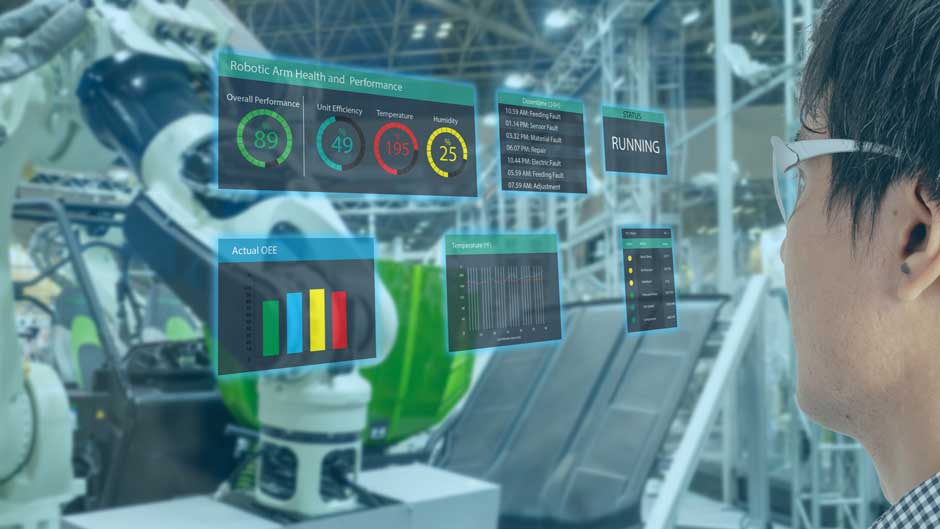Augmented Reality (AR) technology has been around for a while, but its integration into the manufacturing industry is relatively new. The integration of AR in Manufacturing provides new opportunities for companies to improve efficiency, reduce costs, and improve the overall quality of their products.
With the advent of 5G technology, AR in Manufacturing is expected to grow even further. This blog post will explore how 5G is transforming AR in Manufacturing and provide real-life examples of how companies use AR in their manufacturing processes.
What is Augmented Reality?
Augmented Reality overlays digital information into the real world. The experiences formed can be viewed on various devices such as smartphones, tablets, or specialized AR headsets. AR technology is used in various industries, including Manufacturing, to enhance how we work, communicate, and learn.
How is AR being used in Manufacturing?
Some of the ways that AR is being used in Manufacturing include:
1. Training
AR is being used to train employees on procedures, equipment and machinery operation. It is done through AR simulations, which provide a safe and controlled environment for employees to learn and practice new skills.
2. Maintenance and Repair
AR is used to assist maintenance and repair technicians with identifying and fixing issues with equipment. It is done through AR instructions, which provide step-by-step guidance for technicians.
3. Quality Control
AR assists quality control by providing technicians with digital overlays of product specifications and tolerances. It allows technicians to assess issues with the product features faster and accurately.
4. Assembly
AR is being used to assist with assembly by providing technicians with digital overlays of assembly instructions. It, thus, helps to improve efficiency and reduce errors during the assembly process.
5. Inventory Management
AR is used to assist with inventory management by providing warehouse workers with digital overlays of product locations. It, thus, helps to improve efficiency and reduce possible errors during the inventory management.
How is 5G transforming the use of AR in Manufacturing?
5G technology is expected to play a significant role in expanding the use of AR in Manufacturing. Some of the ways that 5G is transforming the use of AR in Manufacturing include:
1. Increased Bandwidth
5G technology provides increased bandwidth, allowing more data transmission in a shorter time. It will enable more realistic and detailed AR simulations and allow more data-intensive applications such as real-time monitoring and analysis.
2. Low Latency
5G technology provides low latency, greatly reducing the delay between sending a request and receiving a response. It will enable more responsive and accurate AR simulations and allow for more real-time applications such as remote control and teleoperation.
3. Improved Connectivity
5G technology provides improved connectivity. More devices to be connected simultaneously. It will enable more employees to use AR technology simultaneously and allow for more applications, such as collaborative AR.
4. Increased Mobility
5G technology provides increased mobility, allowing AR applications to be used on mobile devices such as smartphones and tablets. It will enable employees to use AR technology in more places and allow for more applications such as field service and remote inspection.
Real-Life Examples of AR in Manufacturing
Many companies are already using AR in their manufacturing processes, and the list is growing as the technology becomes more widely adopted. Here are a few examples of how companies are using AR in their manufacturing processes:
1. Boeing
Boeing is using AR technology to assemble its 737 MAX aircraft. AR headsets are being used to provide assembly technicians with digital overlays of assembly instructions, which can help to improve efficiency and reduce errors during the assembly process.
2. GE Appliances
GE Appliances uses AR technology to assist with the maintenance and repair of its products. AR technology is being used to provide maintenance and repair technicians with digital overlays of product diagrams and instructions, which can help to improve efficiency and reduce errors during maintenance and repair.
3. DHL
DHL is using AR technology to assist with inventory management. AR technology is being used to provide warehouse workers with digital overlays of product locations, which can help to improve efficiency and reduce errors during the inventory management process.
4. Siemens
Siemens is using AR technology to train its employees. AR simulations are being used to provide a safe and controlled environment for employees to learn and practice new skills.
5. Volvo Construction Equipment
Volvo Construction Equipment uses AR technology to assist with the maintenance and repair of its products. AR technology is being used to provide maintenance and repair technicians with digital overlays of product diagrams and instructions, which can help to improve efficiency and reduce errors during maintenance and repair.
Conclusion
With the advent of 5G technology, Augmented Reality in Manufacturing is expected to grow even further. 5G technology provides increased bandwidth, low latency, improved connectivity, and increased mobility, enabling more realistic and detailed AR simulations, more responsive and accurate AR simulations, more collaborative AR, and more AR applications on mobile devices. Companies such as Boeing, GE Appliances, DHL, Siemens, and Volvo Construction Equipment are already using AR in their manufacturing processes, and many more will follow suit shortly. The integration of AR and 5G in Manufacturing indicates that the future of Manufacturing is technology-driven, efficient, and smart.

